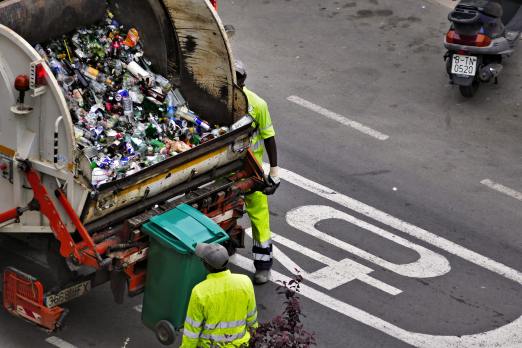We typically discuss food waste, a stage where food exits our food systems, but it is equally as important to understand where it all begins, the soil! At the beginning of food production, soil and farming practices set the stage for the sustainability of our food system.
One of the ways farmers and producers are currently working to reduce the damage of industrial farming is through regenerative farming. The Regenerative Agriculture Foundation defines it as “any practice, process, or management approach that enhances the functioning of the systems on which it relies.” The methods that make up regenerative farming are deservedly now at the forefront of discussion in regards to climate change.
It may sound, at first, like a new buzzword, but the health of soil is at the foundation of agriculture itself. Soil may not look like much, but it is very much a living, interactive part of our environment. Soil provides key nutrients required for plant growth such as nitrogen, phosphorus, and potassium as well as many others. The soil itself is composed of minerals, organic matter, living organisms, gas, and water⏤and all of it is affected by what happens in, on, and around it.
Much of regenerative farming involves the practice of making sure that soil is kept in tip-top shape in terms of the mineral, water, carbon, and nutrient content. In return, the farmland works symbiotically with the rest of the ecological landscape and stays arable decades longer. Healthy soil acts as a highly-effective carbon-sink, a natural pest repellent, and if treated right can produce healthier foods at a lower environmental cost as well.
Industrial-level farming depends on intensive water and growing practices which results in depleted nutrients in the ground and eventually the destruction of the soil itself. Soil is often overtilled, underfed, and overworked until it loses all biodiversity and is effectively dead. When the soil is misused in this way it can become extremely difficult to grow crops and leads to further desertification of previously arable land.
Nearly all large-scale farming operations in the US use methods that follow down that path, but there are ways to reverse the damage.
Smarter crop rotation, using organic pest solutions, regenerative grazing, and more natural solutions can be incorporated in various degrees in order to preserve current farmland or regenerate current arid lands. Much of this has yet to be explored on the same scale as industrial farming as the organic and non-industrial farming sector makes up less than 1% of all farmland in the US.
Fortunately, many of these methods are proven tried and true where they are incorporated.
Crop rotation is important for soil as some crops are extremely greedy in terms of the nutrients they absorb from the soil, whereas other crops act to replenish the soil with nutrients they return to their roots. It’s the give and take that allows soil to recover as opposed to intensive plants using up the nutrients in the same soil four seasons a year.
Many regenerative farms also choose to allow grazers onto the fields while they lay fallow after the primary plant is out of season. The animals that graze fertilize the soil naturally and cause less destruction to topsoil as opposed to continuous tilling.
Natural pest solutions are less harsh on the soil and have a much lower environmental cost to produce. Glyphosate, the primary ingredient in non-organic pesticides, actively attacks the amino acids in plants and only gets to store shelves after an immense amount of fossil fuels are used in production.
What do consumers want?
Consumers have clearly indicated through shopping habits that many prioritize natural solutions with the wave of organic isles that can be found in many grocery stores. In 2019, Nielsen found 73 percent of global consumers said in order to reduce their environmental footprint they would be willing to change their habits.
With this in mind it is clear that in order to have a more sustainable food system it is as important to consider the beginning as it is the end of food production.
We don’t all have access to organic food or local farms, but we can all make sure that we smartly use the food we buy!
There is so much time, energy, and natural resources that goes into the production of our food today that it makes utilizing what we’ve grown even more important. Your resourcefulness can help keep climate change in check.
If you feel as strongly as we do about the topic then check out our blog about ways to reduce food waste at home.













